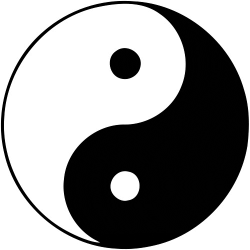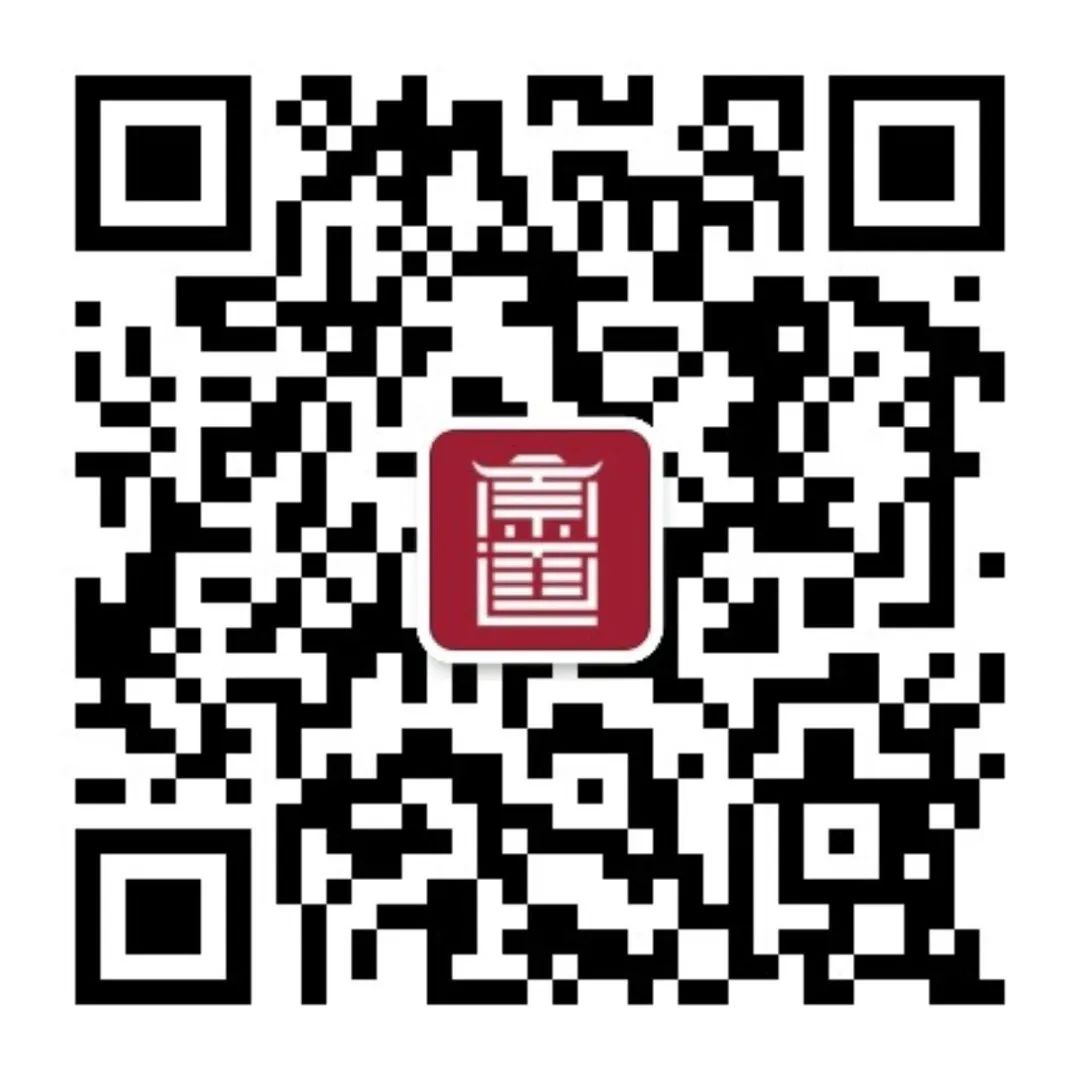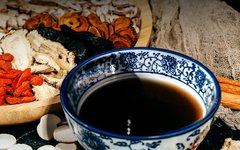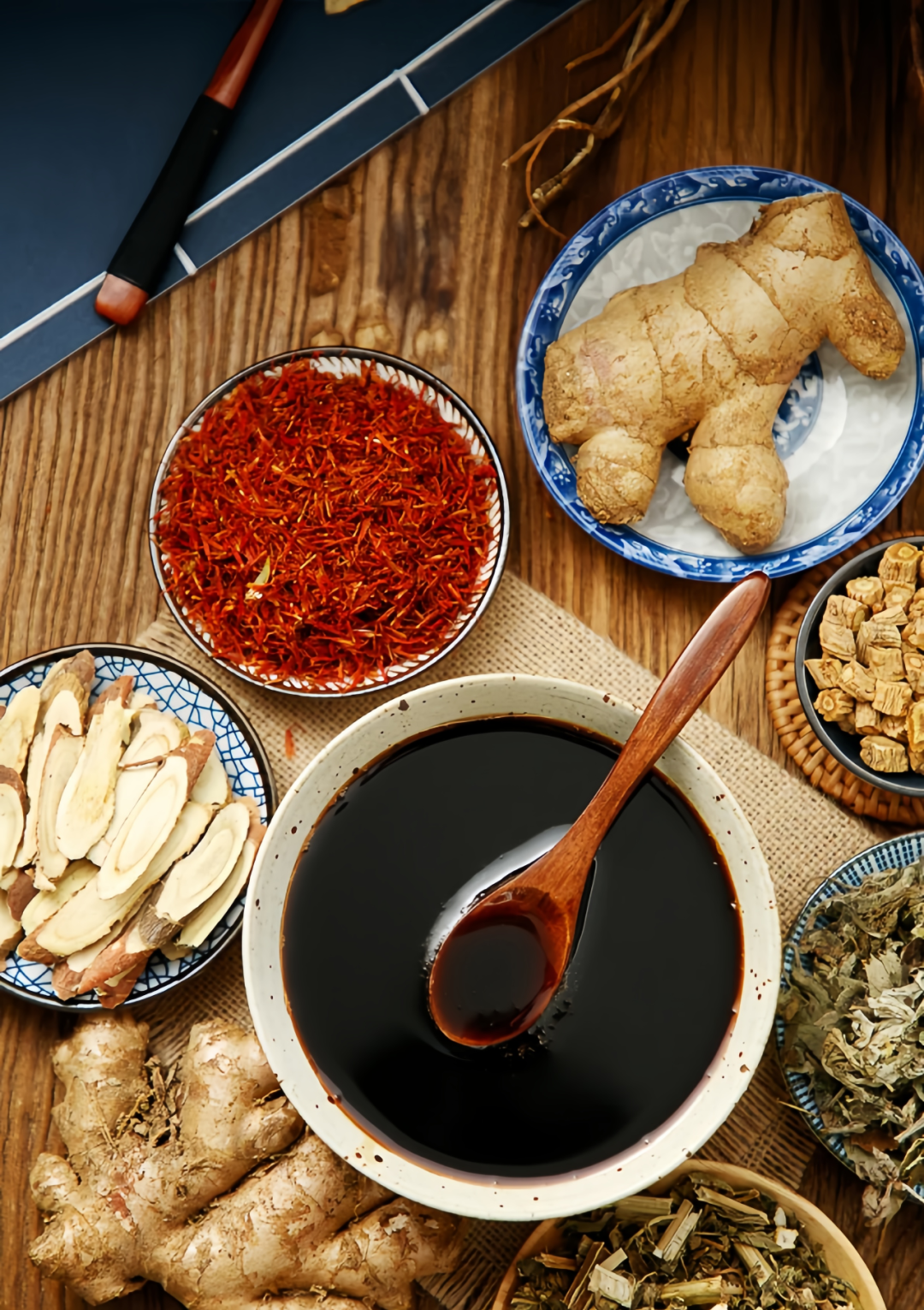
“Ginger” is a pungent and warm (hot) substance, belonging to the lung, spleen, and stomach meridians. It has the functions of opening the pores, warming the lungs and spleen, dispersing cold and returning yang, transforming fluids, and descending rebellious qi, making it particularly suitable for treating phlegm and fluid retention.
This article will provide a superficial discussion on the regularity of using ginger in the treatment of phlegm and fluid according to Zhang Zhongjing.

1. Use Fresh Ginger to Disperse Cold and Move Fluids, and Dried Ginger to Warm the Lungs and Middle Jiao, Transform Cold and Resolve Fluids.
The main difference between fresh ginger and dried ginger is: “Fresh ginger moves but does not hold, while dried ginger holds but does not move.” Fresh ginger has a strong dispersing power, which is advantageous for dispersing cold pathogens, moving fluids, and descending rebellious qi; dried ginger has a strong warming nature, which is its specialty in warming the lungs and middle jiao, dispelling cold, transforming fluids, and returning yang.
Zhang Zhongjing made strict selections in using fresh and dried ginger for treating phlegm and fluid based on their different properties, demonstrating unique ingenuity.
In the “Shang Han Lun” and “Jin Gui Yao Lue”, the formulas that use fresh ginger for treating phlegm and fluid include: Gui Zhi Sheng Jiang Zhi Shi Tang, She Gan Ma Huang Tang, Wu Zhu Yu Tang, etc.
Those using dried ginger include: Xiao Qing Long Tang, Ling Gan Wu Wei Jiang Xin Tang, Ban Xia Gan Jiang San, Gan Jiang Ren Shen Ban Xia Wan, etc.
The intention is that Gui Zhi Sheng Jiang Zhi Shi Tang is used to treat cold fluids stagnating internally, with qi rebelling upwards. Fresh ginger is used to warm and disperse cold fluids and to open and descend rebellious qi, enhancing the function of Gui Zhi in descending the cold fluid’s rebellious qi.
She Gan Ma Huang Tang is used to treat cough and wheezing due to internal fluid stagnation and external cold pathogen. Fresh ginger is used to disperse cold pathogens, move fluids, and release the exterior, combined with Xi Xin to disperse cold and move fluids; assisting Ma Huang and She Gan to induce sweating and release the exterior, and to open the lungs and resolve phlegm.
However, for Xiao Qing Long Tang, which also treats cough and wheezing caused by external cold inducing internal fluid, dried ginger is used instead of fresh ginger.
This is because:
Firstly, Xiao Qing Long syndrome has obvious exterior symptoms, and the formula uses Ma Gui to induce sweating and release the exterior to open the lungs, so there is no need to use fresh ginger to disperse cold and release the exterior.
Secondly, Xiao Qing Long Tang syndrome also has fluid stagnation in the stomach, with middle yang obstructed by cold fluids, causing dry vomiting and chest fullness, thus dried ginger is used to warm the middle and transform fluids.
As Ke Yunbo said: “Using dried ginger instead of fresh ginger is because the flavor and properties of fresh ginger are not as intense as dried ginger; its great warmth is sufficient to drive away the water below the heart… Moreover, the exterior release has the sharpness of Ma and Xi, and does not rely on the horizontal dispersal of fresh ginger.” This succinctly points out the true meaning of using dried ginger instead of fresh ginger.
Ling Gan Wu Wei Jiang Xin Tang is used to treat cough and wheezing due to spleen yang deficiency and cold fluids invading the lungs. This formula does not use fresh ginger but uses dried ginger as the main herb, due to its pungent and warming nature, to disperse the cloudy qi, warm and move spleen yang to transform dampness, and warm the lungs to dispel cold and transform fluids, adhering to the principle of “for phlegm and fluid, one should use warming herbs to harmonize it” in selecting herbs and formulating.
Moreover, for treating stomach cold fluids, combined with liver qi rebelling upwards, causing dry vomiting, headache, and salivation, Wu Zhu Yu Tang heavily uses fresh ginger to calm the stomach qi and assist Wu Zhu Yu in dispersing cold and descending rebellious qi to stop vomiting.
Similarly, for Ban Xia Gan Jiang San, which primarily treats vomiting, why is dried ginger used instead of fresh ginger? Because Ban Xia Gan Jiang San syndrome is due to cold fluids stagnating in the stomach, with heavy cold in the stomach, while Wu Zhu Yu Tang syndrome has cold fluids combined with liver qi rebelling upwards, with the evil obstructing the head and chest, showing similarities and differences.
Wu Zhu Yu Tang treats both liver and stomach; Ban Xia Gan Jiang San specifically treats the stomach, thus using “holding but not moving” dried ginger to warm the stomach, combined with Ban Xia to transform fluids and descend rebellious qi, achieving the goal of warming the stomach and stopping vomiting.
Gan Jiang Ren Shen Ban Xia Wan is used to treat stomach qi deficiency and cold, combined with fluid stagnation and turbid yin rebelling upwards, causing persistent vomiting during pregnancy, also using dried ginger to stabilize the middle jiao, warm the middle, dispel cold, and invigorate the middle yang, transforming cold fluids.
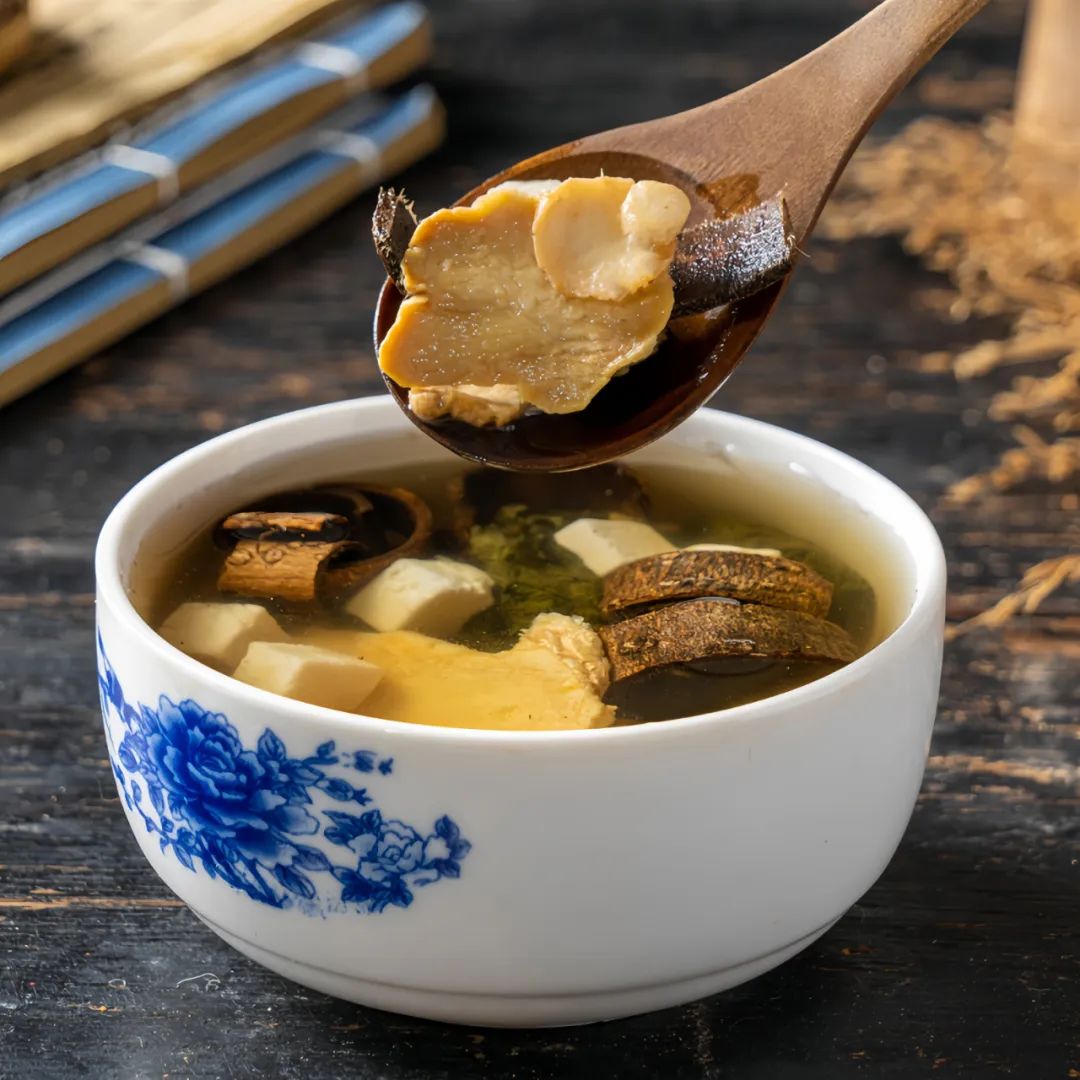
2. For Treating Cold Fluids and Vomiting, Use Ginger and Ban Xia Together, Complementing and Resisting Each Other.
Zhang Zhongjing’s formulas often use “ginger” when Ban Xia is present, and it is frequently mentioned in all modifications: “For vomiting, add Ban Xia,” thus the combined use of ginger and Ban Xia has become a general rule.
This is because the combination of ginger and Ban Xia can enhance the power to descend rebellious qi and stop vomiting, and ginger can also resolve the toxicity of Ban Xia.
Such examples are common in formulas for treating cold fluids and vomiting.
For instance: Xiao Ban Xia Tang, Xiao Ban Xia Jia Fu Ling Tang, Sheng Jiang Ban Xia Tang, Ban Xia Gan Jiang San, Gan Jiang Ren Shen Ban Xia Wan, Xuan Fu Dai Zhe Tang, etc., all use ginger and Ban Xia as the main herbs, and are based on Xiao Ban Xia Tang with additional flavors.
Depending on the differences in condition, pathogenesis, and location of the disease, one may use fresh ginger, dried ginger, ginger juice, or a combination of fresh and dried ginger, or adjust the ratio of ginger and Ban Xia to adapt to the condition, truly embodying the principle of flexible application.
In terms of dosage ratios, for example, Sheng Jiang Ban Xia Tang heavily uses ginger juice (this is the heaviest use of fresh ginger by Zhang Zhongjing), primarily acting to open phlegm, unblock yang, and disperse knots, indicating its role as the monarch herb.
Xiao Ban Xia Tang uses half a jin of fresh ginger and one sheng of Ban Xia, which is double the amount of Ban Xia in Sheng Jiang Ban Xia Tang, primarily acting to transform fluids and descend rebellious qi, indicating that Ban Xia is the main herb in the formula.
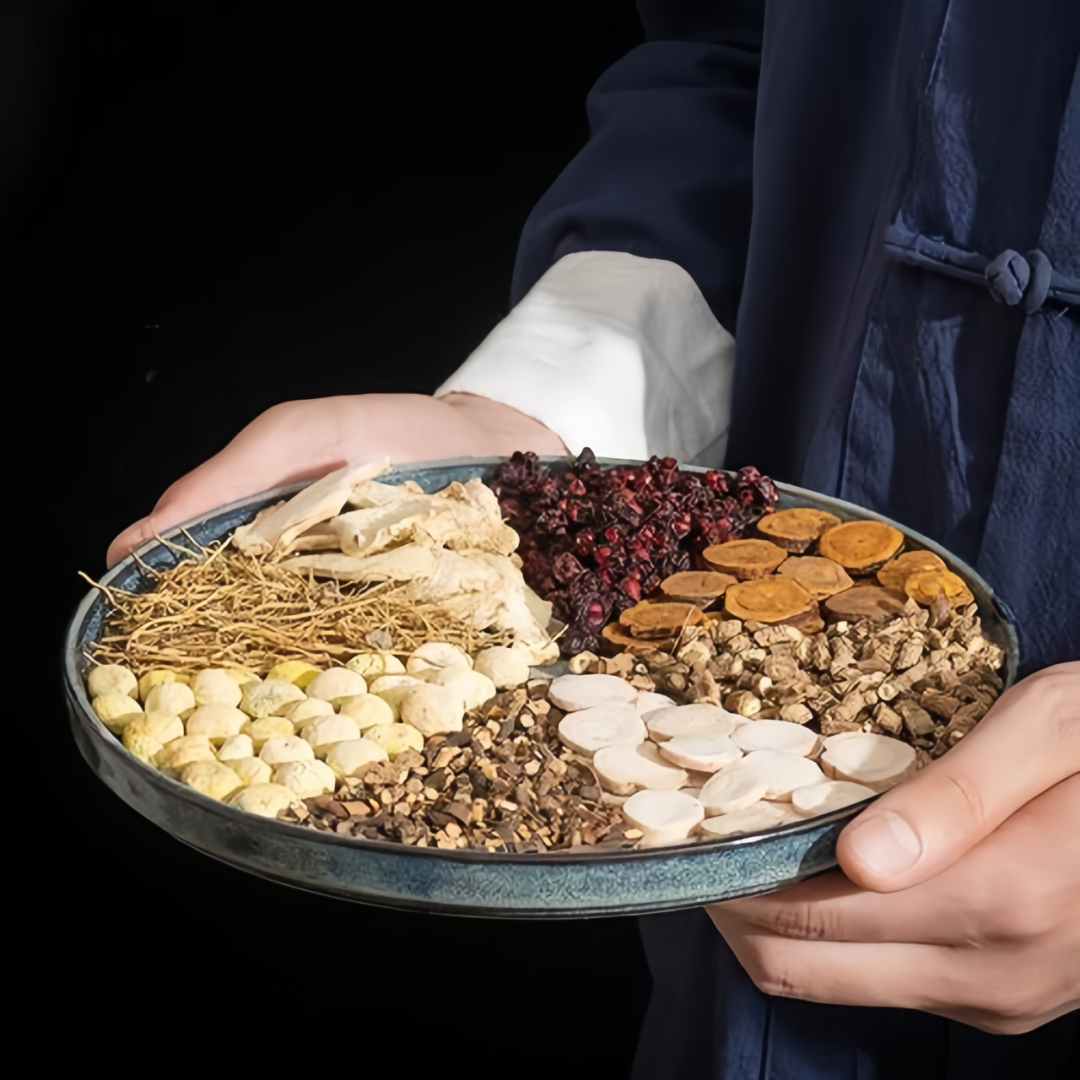
3. For Treating Cold Fluids, Cough, and Wheezing, Combine Ginger with Pungent Flavors.
It is well known that dried ginger, Xi Xin, and Wu Wei Zi are excellent medicines for treating phlegm and fluids.
Dried ginger is pungent and warming, entering the spleen and lungs; Xi Xin is pungent and warm, entering the lungs and kidneys; Wu Wei Zi is sour, sweet, and warm, entering the lungs and kidneys. The combination of these three governs the lungs, spleen, and kidneys, especially suitable for treating phlegm and fluids from the root, with dried ginger and Xi Xin having the functions of warming yang, transforming fluids, and dispelling cold.
The “Shen Nong Ben Cao Jing” records that Xi Xin is used to treat cough and rebellious qi, with wind-cold adhering to the fluids in the chest (the formless cold adhering to the tangible fluids, known as “cold in the water”). However, both are pungent and warm, easily drying and dispersing lung qi, and can easily injure fluids.
Therefore, ginger is paired with Wu Wei Zi to tonify qi, generate fluids, and restrain the lungs, preventing excessive drying and dispersing from the pungent and warm nature of ginger, allowing cold fluids to be eliminated without harming qi and fluids. This pairing has both dispersing and restraining effects, complementing each other.
Zhang Zhongjing’s formulas for treating cold fluids and cough often combine the three pungent herbs.
In addition to the aforementioned She Gan Ma Huang Tang, Xiao Qing Long Tang, and Ling Gan Wu Wei Jiang Xin Tang, there are also Ling Gan Wu Wei Jiang Xin Xia Tang, Ling Gan Wu Wei Jiang Xin Xia Ren Tang, Ling Gan Wu Wei Jiang Xin Xia Ren Huang Tang, Xiao Qing Long Jia Shi Gao Tang, Hou Po Ma Huang Tang, and the modifications of Zhen Wu Tang: if there is coughing, add half a sheng of Wu Wei Zi, and one liang each of Xi Xin and dried ginger, etc.
The three derivative formulas of Ling Gan Wu Wei Jiang Xin Tang are all based on Ling Gan Wu Wei Jiang Xin Tang, where the pungent flavor is the main herb. If phlegm evil has not been eliminated and there is much phlegm and rebellious vomiting, add Ban Xia; if wheezing is severe, add Xing Ren; if phlegm evil is combined with heat, add Da Huang.
For cough and wheezing induced by cold, with obvious exterior symptoms, use Xiao Qing Long Tang, which includes Ma Gui to induce sweating and release the exterior; using the pungent flavor of ginger to move water qi and moisten the kidneys. For those with less obvious exterior symptoms, use She Gan Ma Huang Tang, which does not include Gui Zhi, using fresh ginger instead of dried ginger.
If the exterior cold is heavier and the internal fluid stagnation is lighter, use Xiao Qing Long Jia Shi Gao Tang. If the exterior cold is lighter and the internal fluid stagnation is heavier, use Hou Po Ma Huang Tang.
For diseases induced by external pathogens causing internal fluids, using the astringent Wu Wei Zi, the ancients often worried about using it too early, fearing it would abruptly restrain qi. However, Zhang Zhongjing combined Wu Wei Zi with ginger and pungent flavors, allowing the dispersing nature of ginger and the restraining nature of Wu Wei Zi to work together, thus achieving both ascending and descending effects, leading to the cessation of coughing.
If Wu Wei Zi is used alone without combining with ginger and pungent flavors, it may easily lead to the disadvantage of abruptly restraining the evil.
From the above eight formulas, the combination of ginger and pungent flavors is an important pairing structure, which can serve as a basic medicinal principle for treating cough and wheezing caused by internal stagnation of cold fluids in the lungs, greatly enhancing the effect of warming the lungs and transforming fluids.
In summary, the combination of the three herbs “opens and closes lung qi”, using pungent dispersing herbs to unblock the obstruction of evil qi, and using sour herbs to restrain the consumption of lung qi, is the best embodiment of the method of combining restraining and dispersing.


•2024 Year of the Dragon, Detailed Analysis of the Zodiac Fortune! Come and see how your Dragon Year fortune is!
•TCM: Coughing with Phlegm? Press these five “Phlegm-Transforming” acupoints for remarkable effects, recommended to save!
•Learn about the six aspects of TCM’s health preservation methods!
•TCM: Sufficient blood leads to flexible tendons; a single prescription nourishes blood and softens tendons, treating various diseases!
•TCM: This herb can absorb the essence of the earth, helping you cultivate your foundation and solidify your roots!
•TCM: Feeling weak, with poor spleen and stomach? A single supplement causes heat? Four major methods to regulate excess heat and cold, upgrading your constitution!
•Daoist Medicine: Understand this point, and miraculous doctors will be everywhere; there will be no disease that cannot be treated!
•Phlegm stuck in the throat and cannot be coughed out? A single prescription solves it! It can also treat thyroid nodules!
•TCM: How are your five organs? Press your navel to find out; the earlier you press, the more benefits!
